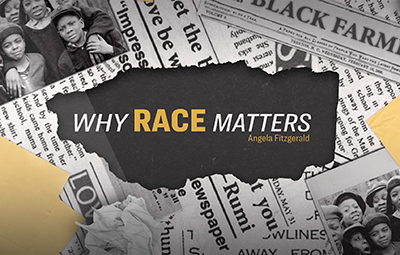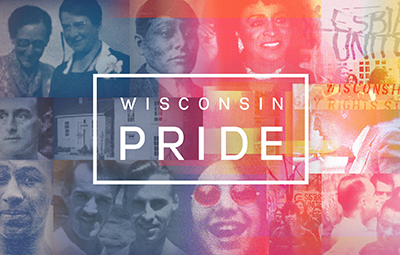Frederica Freyberg:
How do down ballot candidates like those running for U. S. Senate in Wisconsin, fare with the tumult at the top of the Democratic ticket for president? On this and the state of legislative races, we turn to UW-La Crosse political scientist Anthony Chergosky. And professor, thanks very much for being here.
Anthony Chergosky:
Thank you.
Frederica Freyberg:
So obviously, things are shaky at the top of the ticket. Now, more than a week out from Joe Biden’s very bad debate performance. What effect might this have on Wisconsin’s U. S. Senate race and its candidates?
Anthony Chergosky:
I think the effects could be substantial, Fred, and that is because the amount of split ticket voting has gone down over the years. By split ticket voting, I mean a ballot where a voter votes for at least one Democrat and one Republican on the same ballot. More and more, we’re seeing voters vote straight ticket, meaning they vote for the same political party for all of the races on the ballot. As partisanship in the electorate has increased, and as the political divide in society has widened, we see more and more that how someone votes for president is a great predictor of how they vote in other races on the ballot. So what happens at the top of the ticket will really matter when it comes to explaining what happens down the ballot.
Frederica Freyberg:
So how does Joe Biden dropping out change the calculus for other races?
Anthony Chergosky:
I think other candidates need to adjust to the new political realities because they could try to perhaps distance themselves from the presidential campaign, try to run their own race. As Senator Baldwin said in a recent statement, it is still possible nowadays to get some cross party voters, but it takes a strong candidate with the right message and the right amount of resources to pull that off. It’s not easy to get voters to cross the party line, but it can be done in certain circumstances. And in fact, with Senator Baldwin, we’ve seen that in the past. She has been able to pull in at least some voters who tend to go the Republican direction.
Frederica Freyberg:
Similar effects down to congressional races and even state legislative races?
Anthony Chergosky:
I would say so. What happens at the presidential level will affect Democrats’ chances of unseating Republican incumbents in the two key competitive U.S. House of Representatives races. Democrats have talked up their opportunities to defeat Bryan Steil and Derrick Van Orden. And what happens at the presidential level will affect their chances of doing that. And of course, when we look at the state Senate and state Assembly, Democrats are enthusiastic about the new district maps. But how much can they take advantage of those new district maps? What happens at the — in the other races on the ballot will have a lot to say about that.
Frederica Freyberg:
So as to the legislature, between, as you say, these redrawn districts and retirements, nearly two-thirds of the Assembly seats are open this election, 60 open seats of 99. And Dems have 120 candidates running. How stunning is that?
Anthony Chergosky:
Candidate recruitment was going to be huge this time around because there are so many redrawn districts. So many districts that have changed significantly since the last round of redistricting. So the pressure is going to be on these candidates to introduce themselves to the voters. We see a lot of incumbents who are either not running or running in a very different district. A lot of new faces coming into the political scene for these state legislative races. So the stakes are high and these candidates are going to have to work really hard. They’re going to have to knock on a lot of doors, march in a lot of parades, make a lot of phone calls to be successful in this campaign.
Frederica Freyberg:
So you remarked how candidate quality would affect the battle for majority control of the Assembly. Is that what you mean? Do these people have to really get out there, put their faces out there and be super engaged?
Anthony Chergosky:
Absolutely. The right message, the right candidate with the right amount of resources. A candidate who can quickly develop trust in what might be a redrawn district or might be a completely new district, a candidate with a compelling message that can take advantage of the political conditions on the ground. Maybe they need to distinguish themselves from the other candidates of their party on the ticket. And of course, money, money, money. That’s going to play a huge role in candidates being able to get their message out in a very crowded political environment. It’s going to be tough for these state legislative candidates to break through in a climate when we’ve got a high-profile presidential race, high profile U. S. Senate race. These state legislative candidates are going to have to work hard.
Frederica Freyberg:
So how likely is it that Democrats could win control of the Assembly?
Anthony Chergosky:
It’s quite possible. And they need to also have a good showing in the state Senate races to lay the groundwork for 2026, where they hope to make a run at the majority. Right now, I would tend to believe that the Republicans are the favorite for the state Assembly majority, but there is some uncertainty about that. And for over a decade, it’s been darn certain that Republicans would be the majority party. For the first time in a long time, there’s at least some question about which party will hold majority control in the state Assembly when we see the new Assembly members come into office next January.
Frederica Freyberg:
All right. We leave it there. Professor Anthony Chergosky, thanks very much.
Anthony Chergosky:
Thank you.
Search Episodes

Donate to sign up. Activate and sign in to Passport. It's that easy to help PBS Wisconsin serve your community through media that educates, inspires, and entertains.
Make your membership gift today
Only for new users: Activate Passport using your code or email address
Already a member?
Look up my account
Need some help? Go to FAQ or visit PBS Passport Help
Need help accessing PBS Wisconsin anywhere?

Online Access | Platform & Device Access | Cable or Satellite Access | Over-The-Air Access
Visit Access Guide
Need help accessing PBS Wisconsin anywhere?

Visit Our
Live TV Access Guide
Online AccessPlatform & Device Access
Cable or Satellite Access
Over-The-Air Access
Visit Access Guide
 Passport
Passport






Follow Us